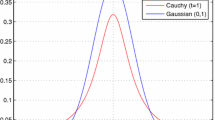Abstract
WSNs have been used in different sectors of applications such as industrial, environmental, and social due to the progress of technology and the necessity. Because the network's sensors are restricted by battery power, network operations are important. The life extension of a wireless sensor network has been explored in this study by locating a large number of disjoint set coverings. All of the targets were covered by each separate group of sensors. Instead of maintaining all sensor nodes in operation, the only way to prolong the service life by about K times is to use the sensors of one cover while the sensors of the other covers are in sleep mode. This approach saves both energy and time by processing useful data and reducing duplicate data coming from different sensors in a region. Different configurations of sensor networks have been tested using an evolutionary computation-based computer intelligence technique, as well as a genetic algorithm and differential evolution. To make the solution possible, a local operator has been incorporated. With integer encoding of solutions in genetic algorithm performs better than differential evolution in finding a good number of disjoint set covers. Over a continuous search space, DE is highly efficient, but its efficiency has been hampered by integer transformation.
Access this chapter
Tax calculation will be finalised at checkout
Purchases are for personal use only
Similar content being viewed by others
References
Y. Xu, J. Fang, W. Zhu, Differential evolution for lifetime maximization of heterogeneous wireless sensor networks. Math. Probl. Eng. (2013). https://doi.org/10.1155/2013/172783
N.H. Mak, W.K.G. Seah, How long is the lifetime of a wireless sensor network? Int. Conf. Adv. Inf. Netw. Appl. 2009, 763–770 (2009). https://doi.org/10.1109/AINA.2009.138.2016
H. Yetgin, K.T.K. Cheung, M. El-Hajjar, L.H. Hanzo, A survey of network lifetime maximization techniques in wireless sensor networks. IEEE Commun. Surv. Tutorials 19(2), 828–854, Second quarter 2017, https://doi.org/10.1109/COMST.2017.2650979
H.U. Yıldız, B. Tavlı, B.O. Kahjogh, Assessment of wireless sensor network lifetime reduction due to elimination of critical node sets, in 2017 25th Signal Processing and Communications Applications Conference (SIU), 2017, pp. 1–4. https://doi.org/10.1109/SIU.2017.7960228
C.C. Lin, Y.C. Chen, J.L. Chen et al., Lifetime enhancement of dynamic heterogeneous wireless sensor networks with energy-harvesting sensors. Mob. Netw. Appl. 22, 931–942 (2017)
F. El Hajji, C. Leghris, K. Douzi, Adaptive routing protocol for lifetime maximization in multi-constraint wireless sensor networks. J. Commun. Inf. Netw. 3, 67–83 (2018). https://doi.org/10.1007/s41650-018-0008-3
T.A. Alghamdi, Energy efficient protocol in wireless sensor network: Optimized cluster head selection model. Telecommun. Syst. 74, 331–345 (2020). https://doi.org/10.1007/s11235-020-00659-9
B.A. Attea, E.A. Khalil, S. Özdemir et al., A multi-objective disjoint set covers for reliable lifetime maximization of wireless sensor networks. Wirel. Pers. Commun. 81, 819–838 (2015). https://doi.org/10.1007/s11277-014-2159-3
M.K. Singh, Discovery of redundant free maximum disjoint Set-k-covers for WSN life enhancement with evolutionary ensemble architecture. Evol. Intel. 13, 611–630 (2020). https://doi.org/10.1007/s12065-020-00374-z
M.F. Abdulhalim, B.A. Attea, Multi-layer genetic algorithm for maximum disjoint reliable set covers problem in wireless sensor networks. Wirel. Pers. Commun. 80, 203–227 (2015). https://doi.org/10.1007/s11277-014-2004-8
X. Yuan, M. Elhoseny, H.K. El-Minir et al., A genetic algorithm-based, dynamic clustering method towards improved WSN longevity. J. Netw. Syst. Manage. 25, 21–46 (2017). https://doi.org/10.1007/s10922-016-9379-7
M. Elhoseny, A.E. Hassanien, Extending homogeneous WSN lifetime in dynamic environments using the clustering model, in Dynamic Wireless Sensor Networks. Studies in Systems, Decision, and Control, vol. 165 (Springer, Cham, 2019). https://doi.org/10.1007/978-3-319-92807-4_4
M. Ayati, M.H. Ghayyoumi, A. Keshavarz-Mohammadiyan, A fuzzy three-level clustering method for lifetime improvement of wireless sensor networks. Ann. Telecommun. 73, 535–546 (2018). https://doi.org/10.1007/s12243-018-0631-x
J. Sahoo, B. Sahoo, Solving target coverage problem in wireless sensor networks using greedy approach, in 2020 International Conference on Computer Science, Engineering and Applications (ICCSEA) (2020), pp. 1–4. https://doi.org/10.1109/ICCSEA49143.2020.9132907
A.R. Aravind, R. Chakravarthi, N.A. Natraj, Optimal mobility based data gathering scheme for life time enhancement in wireless sensor networks, in 2020 4th International Conference on Computer, Communication and Signal Processing (ICCCSP) (2020), pp. 1–5, https://doi.org/10.1109/ICCCSP49186.2020.9315275
Author information
Authors and Affiliations
Corresponding author
Editor information
Editors and Affiliations
Rights and permissions
Copyright information
© 2022 The Author(s), under exclusive license to Springer Nature Singapore Pte Ltd.
About this paper
Cite this paper
Shanthi, D.L. (2022). Maximization of Disjoint K-cover Using Computation Intelligence to Improve WSN Lifetime. In: Raj, J.S., Shi, Y., Pelusi, D., Balas, V.E. (eds) Intelligent Sustainable Systems. Lecture Notes in Networks and Systems, vol 458. Springer, Singapore. https://doi.org/10.1007/978-981-19-2894-9_17
Download citation
DOI: https://doi.org/10.1007/978-981-19-2894-9_17
Published:
Publisher Name: Springer, Singapore
Print ISBN: 978-981-19-2893-2
Online ISBN: 978-981-19-2894-9
eBook Packages: Intelligent Technologies and RoboticsIntelligent Technologies and Robotics (R0)




